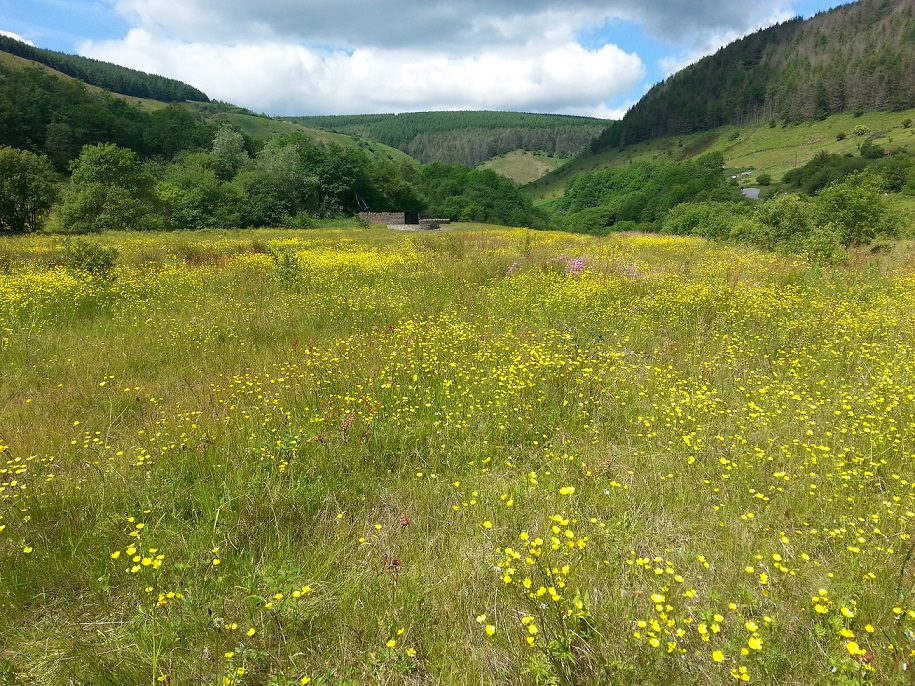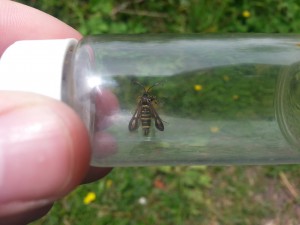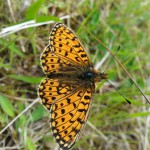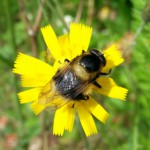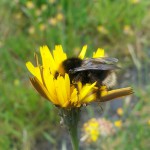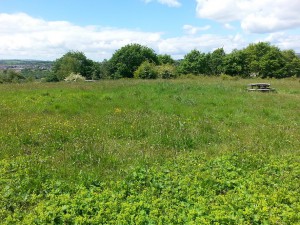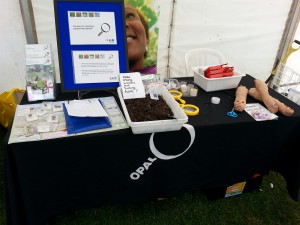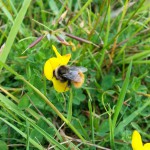
It’s time once again to update you all on my activities and findings in the past 4 weeks. As per usual, fieldwork has been of principal focus this month and I’m loving every single second of it! Every single day I am learning more about the habitats I grew-up on and love so much. I continue to be fascinated by the sheer diversity of habitats and wildlife found on colliery spoil tips. When you consider colliery spoil tips are composed of the same substrate matter, you would perhaps think every spoil tip would be the same. This, however, is not the case. Colliery spoil tips vary considerable in their vegetation structure, water availability, levels of disturbance and neglect, bare ground cover, topography, aspect etc. This means that no two sites are the same, making these sites very interesting to study. I am thankful every day that I’m working on the habitats I love, in the area I love – the South Wales valleys – and long may it continue.
The species lists are building for each of my study sites, however very slowly. Unfortunately, the weather has been dreadful so far this Spring/Summer. While the weather has been largely dry, it has been very cool for the time of year. Days are often overcast, or if sunny they are accompanied by cool winds. This has been less than idea for invertebrates, particularly aculeates which are my principal focus group. As such, the season has been really slow and nothing seems to be present in good numbers. Hopefully, with the onset of a heatwave this week, things will improve quickly. Despite the slow season, I am still generating records with every visit. These may not necessarily be records within my principal focus groups (aculeates and hoverflies), but they are still useful and appreciated none-the-less. I have yet to identify many of the aculeate and hoverfly specimens I have collected, so unfortunately I have little useful information to tell you about these groups. However, I have recorded other interesting invertebrates including:
- Six-belted Clearwing (Bembecia ichneumoniformis) – a locally distributed species in southern Britain and my first ever clearwing! Found at Cwm Colliery (Beddau) where the species foodplants – bird’s-foot trefoil (Lotus) and kidney vetch (Anthyllis vulneraria) – are in abundance.
- Bishop’s Mitre Shieldbug (Aelia acuminate) – a common and widespread species in Southern Britain but none-the-less, a lovely shieldbug species. It favours tall and rank dry grassland habitats and was found in good numbers at both Albion Tip (Cilfynydd) and Coedely Colliery.
- Small Pearl-bordered Fritillary (Boloria selene) – a widespread and locally abundant species in Wales and Scotland. Found at Clydach Vale Country Park and Gelli Tips, where it utilises the damp grassland and moorland habitats.
Several butterfly species have made an appearance in the past week including Large skipper (Ochlodes sylvanus) and Small skipper (Thymelicus sylvestris). Combined with Dingy skipper (Erynnis tages), this means most sites now have 3 skipper species present – just need Grizzled Skipper (Pyrgus malvae) now!
One of my favourite hoverfly species has also made an appearance in recent weeks, and is now a common site on the spoil tips – Volucella bombylans. This rather impressive bumblebee mimic has two main varieties which mimic different species of bumblebee. One with an orange-red tail (V. bombylans) mimics the Red-tailed bumblebee (Bombus lapidarius), while the other has a white tail (V. plumata) and mimics the White-tailed bumblebee complex (Bombus lucorum agg.) – impressive stuff!
As for my favourite group, bumblebees, I have covered much of the group and am unlikely to make many new additions to the species list. I am still vigilant and any new additions are likely to be cuckoo bumblebee species. I have recorded the Forest-cuckoo bumble (Bombus sylvestris) at 4 of 6 sites currently, but I have yet to record any other cuckoo species. I am hopeful I will record other cuckoo species soon. In other news, earlier in the month I attended a wildlife walk at Cefn Fforest & Pengam Ecopark, given by Andy Karr of the Gwent Wildlife Trust. This site was formally the location of Pengam Colliery and is now Wales’ only community-run ecopark. The walk was fantastic and it was great to see a different colliery spoil tip – particularly one that has gained ecopark status. This status appears to have done little to protect the site though, with anti-social behaviour a common problem and the little to no management resulting in some areas becoming inundated with scrub and invasive plant species. It appears that in this tough economic climate, councils are unwilling to invest money in the maintenance and management of colliery spoil tips, despite their importance to local communities and wildlife. It is such a shame given the impressive biodiversity value of many spoil tips. If these tips were anywhere else in the UK, I am confident they would have LNR/NNR/SSSI status that would secure their future. I hope that sometime in the near future, something will be done to protect these sites and help conserve our biodiversity and industrial heritage.
I have also assisted with several events this month. On Saturday 6th June, I attended the ‘Go Wild!’ event at Pantside (near Newbridge) to assist OPAL in delivering OPAL earthworm surveys. This fantastic event, organised by Caerphilly County Borough Council and funded by various organisations, enables people of all ages to enjoy a wild day out. A wide range of activities were on offer, providing visitors with the opportunity to learn about many different habitats and wildlife including butterflies, moths, reptiles and amphibians, birds, fish, aquatic invertebrates, earthworms etc. (see our earthworm stand above). I had a dig around in the morning prior to the event to collect as many earthworms as I could. These were then subsequently placed into a white tray along with soil, providing children with an opportunity to get their hands dirty looking for and learning about earthworms.
As the site was a colliery spoil tip, attending the event also provided an opportunity for me to visit a new colliery spoil tip and generate some records for the site. The weather was less-than-ideal but I managed to record a few bumblebee species during a brief walk. One of the species I recorded was the mountain bumblebee (Bombus monticola), which to my surprise was present in decent numbers. I was told by the County Ecologist that this may be the first record for B. monticola on-site and possibly even within the entire county – although I’ll have to contact the local records centre to have it confirmed.
On 26th June, I assisted OPAL in delivering bug hunts with schoolchildren from Overmonnow Primary School at Vauxhall Fields, Monmouth. This was part of ‘Schools Day’ for the ‘We Count for Wildlife Monmouth 2015’ event. The school was split into 5 groups of 29 pupils, and each group moved from one wildlife activity to the next until they had undertook all 5 activities. Our activity was to undertake a hedgerow biodiversity survey with the children. Small groups were given a 3m section of hedgerow to survey for 5 minutes. They beat the vegetation to dislodge any invertebrates, which subsequently fell into dustpans where they could be counted and identified. I assisted in the identification of invertebrates, advising on invertebrate collecting techniques and recording data, and administering and collecting equipment. Although this event was not on colliery spoil, nor was it in the South Wales valleys, it was great to gain further experience working with schoolchildren and delivering environmental education activities.
And that sums up my month. Fingers crossed for fine weather for July and August. Thanks for reading. Stay tuned!

